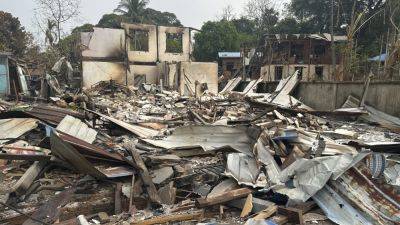A Ragtag Resistance Sees the Tide Turning in a Forgotten War
The night Ma Suu Kyi thought she would die of her wounds on the front lines of a forgotten war, a crescent moon hung overhead. A pendant of the Virgin Mary dangled around her neck. Maybe those augurs saved her. Or maybe, she said, it was not yet time for her to die.
“When I joined the revolution, I knew my chances of surviving were 50-50,” Ms. Suu Kyi, 21, said of her decision to enlist as a rebel soldier, fighting to overthrow the junta that returned Myanmar to military dictatorship three years ago. “I’m an ordinary girl, an ordinary young person. I believe in federal democracy and human rights.”
Ms. Suu Kyi said the words “federal democracy” in English. There are no easy words for the concept in Burmese.
Since the junta in Myanmar staged its coup in February 2021, ending a brief period of democratic reform and training its guns once again on peaceful protesters, much of the country has turned against the military. A new generation, which came of age during the civilian administration of the Nobel laureate Daw Aung San Suu Kyi, has taken to arms, joining rebels who have opposed military dictatorship for decades.
The world’s gaze has remained focused on other conflicts on other continents — to the consternation of many in Myanmar who wonder why the chaos and death here brings little global outcry. Now, after three years of desperate resistance, the battle lines are changing fast. The rebels have overrun scores of military bases and taken over dozens of towns. The tempo of victory has quickened in recent days, and anti-junta forces now claim to control more than half of Myanmar’s territory, from lowland jungles to the foothills of the Himalayas.
Much of the fighting’s rhythm seems syncopated to that of another century:







